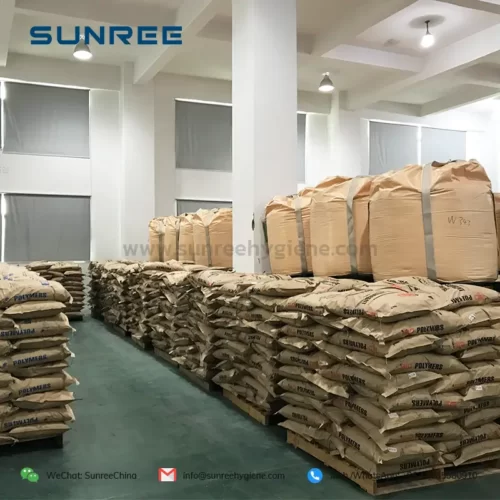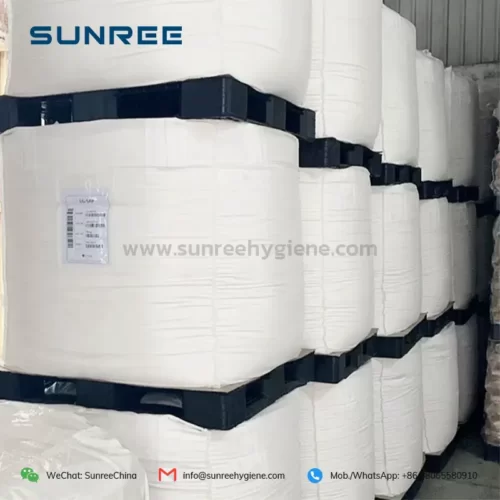Sumitomo Aqua Keep SA60N SAP Super Absorbent Polymer
Additional information
| Model | Sumitomo SA60N CROSS LINKED SODIUM POLY ACRYLATE |
|---|---|
| Appearance | White powder (Granules) |
| Moisture Content | 8.9% |
| Retention Absorbency | 40g/g |
| Absorption Capacity (0.9% NaCl aq.) | 62g/g |
| Bulk Density | 0.68g/ml |
| Residual Acrylic Acid Monomer | 19ppm |
| Absorptive Rate | 34sec |
| Paricle Size Distrubution >850μm | 0.0% |
| Paricle Size Distrubution 850-500μm | 10.8% |
| Paricle Size Distrubution 500-180μm | 86.8% |
| Paricle Size Distrubution 180-106μm | 2.1% |
| Packaging | 800kg super sack big bag |
Share:
Sumitomo Aqua Keep SA60N SAP Super Absorbent Polymer
Product Details:
Sumitomo Aqua Keep SA60N superabsorbent polymer is widely used in feminine care products, ladies pads, feminine sanitary napkins, etc.
Feature
- It can absorb water several hundred times more than its dry weight. It will retain most of the absorbed liquid, even under considerable pressure.
- It has a narrow and controlled particle size distribution.
- It demonstrates excellent flowability and good scatter uniformity in most feeding systems.
- It is almost insoluble in water or other solvents.
- The amount of monomer remaining in the product is extremely low.
- The applications are expanding greatly, including various hygiene products (disposable diapers, sanitary napkins, etc.).
What are Super Absorbent Polymers?
This type of polymer can absorb and retain water several hundred times more than its dry weight without dissolving in water.
- Cellulose fiber or sponge: Absorbs water by capillary action and readily releases the water when pressure is applied.
- Super absorbent polymer: Hold water within molecular chains and retain the water even under pressure.
Principle
The absorption capacity of super absorbent polymers is determined by osmotic pressure, the polymer’s affinity, and the polymer’s rubber elasticity. The osmotic pressure has the most impact on the absorption capacity.
Composed mainly of sodium polyacrylate, AQUA KEEP has a high content of -COO- and Na+ ions. The difference between the ion concentration inside the polymer and that of the surrounding water solution determines the intensity of osmotic pressure. The lower the ion concentration of the surrounding water solution, the greater the resultant difference in ion concentration, and accordingly the osmotic pressure goes up. This osmotic pressure enables the polymer to absorb a large quantity of water.
The affinity of the polymer with its surrounding solution also affects the absorption capacity of the polymer. The hydrophilic groups “-COOH” and “-COONa” in AQUA KEEP have a high affinity for water, allowing a water solution to be absorbed. The affinity, however, is less significant than osmotic pressure in determining the polymer’s absorption capacity.
As a result of these two factors, the polymer should continue to absorb water to the extent that the ion concentration between inside the polymer and the surrounding solution equalizes. To control the water absorption to an intended level, the polymer must be provided with specific rubber elasticity.
The rubber elasticity of the polymer increase as the crosslinking density of that polymer increases. The absorption capacity of the polymer reaches its maximum when its rubber elasticity and its water absorbing power generated from osmotic pressure and affinity of the polymer are balanced.




